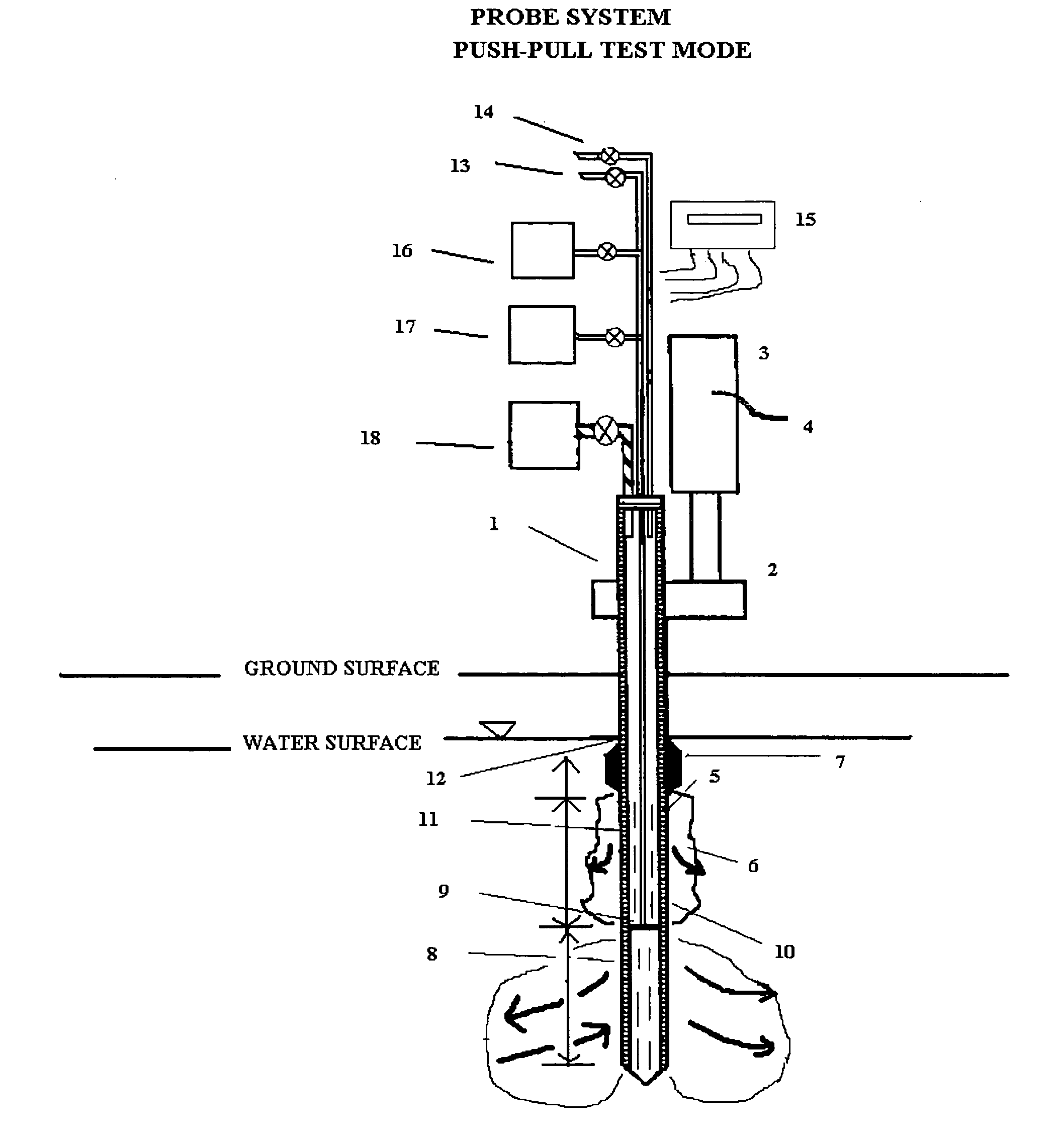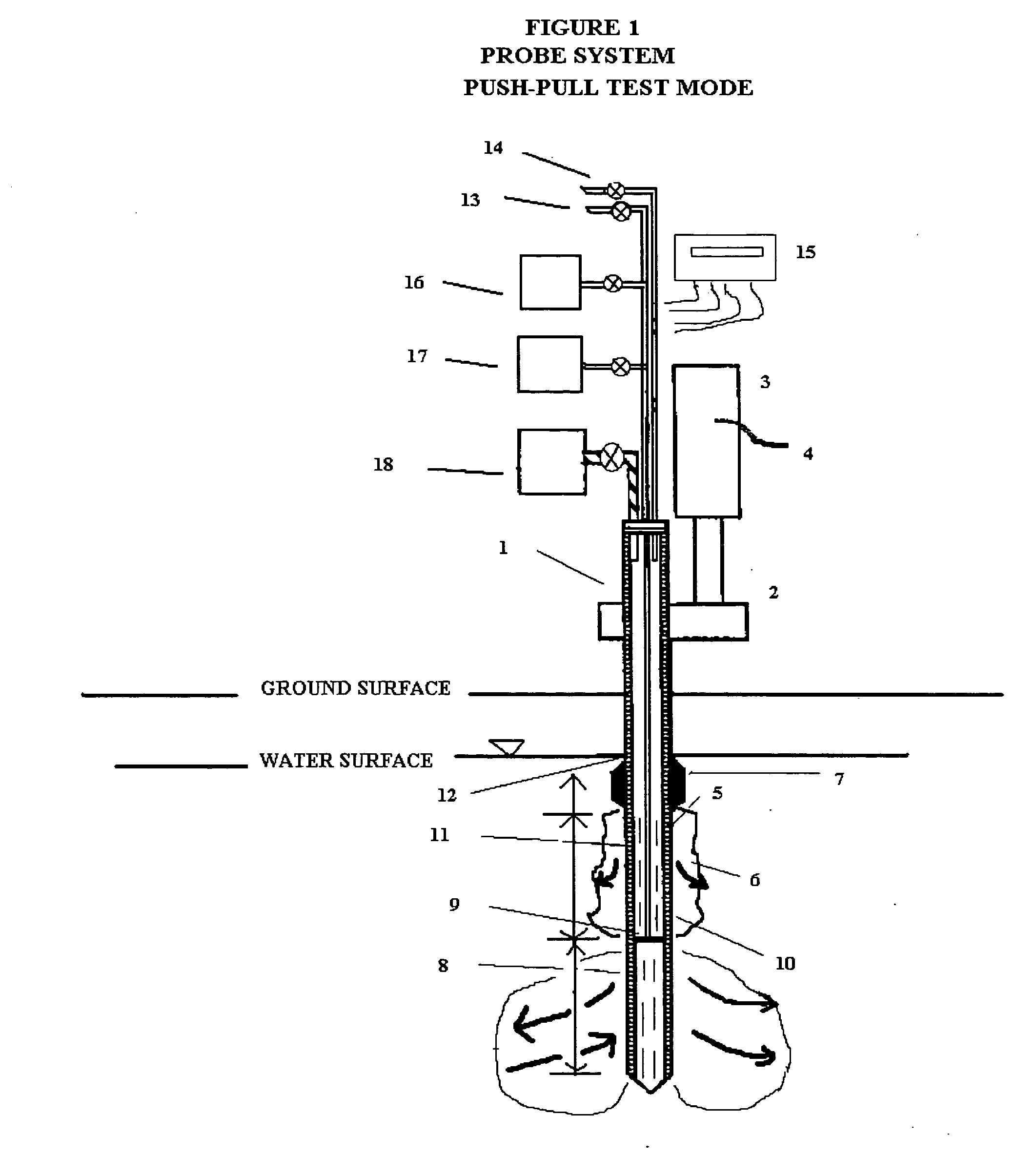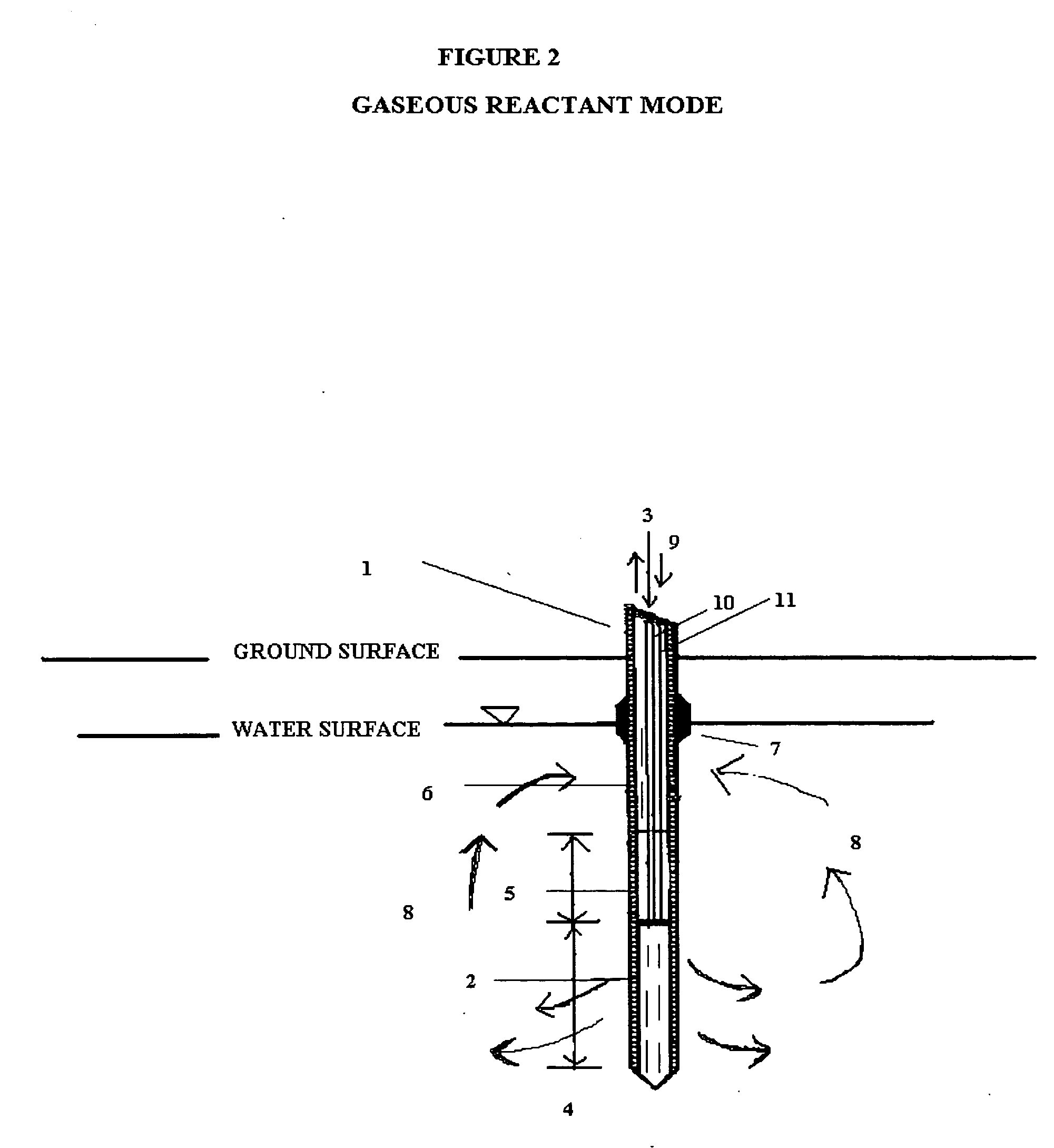In situ remedial alternative and aquifer properties evaluation probe system
a technology of aquifer properties and probes, which is applied in the field of in situ remedial alternatives and aquifer properties evaluation probe systems, can solve the problems that prior art does not accommodate the ejection of sealants from probes, and achieve the effect of faster and more easily automated
- Summary
- Abstract
- Description
- Claims
- Application Information
AI Technical Summary
Benefits of technology
Problems solved by technology
Method used
Image
Examples
Embodiment Construction
[0034] The probe system described here is multi-purpose in that it was designed: 1) to measure the relative permeability of the subsurface soil and groundwater to a liquid or gas ejectant, 2) to recover soil gas, soil, or groundwater samples for contaminant analyses, 3) to measure the chemical dosage and reaction, dissolution, adsorption, desorption, leaching, or fixation rate of a reactant such as a chemical or biochemical oxidant, metallic or bimetallic dehalogenating agent, surfactant or emulsifier solution, adsorbent media regenerant, leaching or fixation reagent that is injected into the matrix and withdrawn during a push-pull test, 4) to perform combinations of the above, 5) to measure the in situ adsorption capacity of adsorbent media and subsequently measure the effectiveness of regenerant(s) for the adsorbent media, and (6) to measure the effectiveness of a treated soil column for inorganic contaminant(s) leaching or fixation. In addition to being an in situ remedial altern...
PUM
| Property | Measurement | Unit |
|---|---|---|
| Temperature | aaaaa | aaaaa |
| Pressure | aaaaa | aaaaa |
| Width | aaaaa | aaaaa |
Abstract
Description
Claims
Application Information
 Login to View More
Login to View More - R&D
- Intellectual Property
- Life Sciences
- Materials
- Tech Scout
- Unparalleled Data Quality
- Higher Quality Content
- 60% Fewer Hallucinations
Browse by: Latest US Patents, China's latest patents, Technical Efficacy Thesaurus, Application Domain, Technology Topic, Popular Technical Reports.
© 2025 PatSnap. All rights reserved.Legal|Privacy policy|Modern Slavery Act Transparency Statement|Sitemap|About US| Contact US: help@patsnap.com



